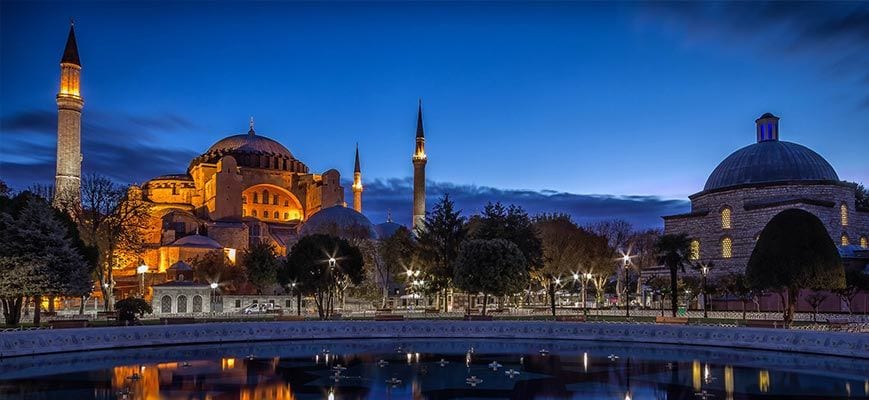No products in the cart.
Information
Hagia Sophia Information
Hagia Sophia (in Spanish Santa Sofía and Ayasofya for the Turks), is one of the architectural wonders of the world, which are still preserved today; for its beauty, size, grandeur and functionality. It was the largest church erected in the Eastern Roman Empire, by orders of Emperor Constantius (son of Constantine), and has been built three times in the same place.
Since its creation, in the year 360, and until 1453, Saint Sophia served as a Byzantine basilica. During that period it was destroyed twice (year 403 and year 532, respectively) by popular revolts and rebuilt with the favor of the emperors Theodosius II and Justinian. In addition, for 57 years it was converted into a Catholic cathedral by the Latin Empire, between 1204 and 1261, until the Byzantine restoration.
For the second reconstruction, the emperor Justinian demanded of all the Roman provinces his best materials, relics, personnel and money; resulting in the great monumental work that we can admire today, and in which, some say, more than 100 thousand workers were employed.
In this way, without sparing resources, the columns and marbles used in the structure were taken from ancient Anatolian cities and their surroundings. The white marbles came from the Island of Marmara, the green porphyry from Egriboz, the pink from Afyon and the yellow from North Africa. The incredible building also has columns brought from the Temple of Artemis, in Ephesus, to be used in the ships, as well as eight columns of Egypt, to support the vaults. The structure in general has a total of 104 columns: 40 in the lower part and 64 in the upper gallery. Its walls were decorated with beautiful mosaics, composed of pieces of gold, silver, terracotta, glass and colored stones; some of them appreciable at present.
Hagia Sophia became famous particularly for its huge dome, with which the Byzantines, according to some specialists, “changed the history of architecture”. Until the completion of the Cathedral of Seville, in 1520, Saint Sophia was listed as the largest cathedral in the world.
In 1453, Constantinople was conquered by the Ottoman Turks under Sultan Mehmed II, who after the capture of the city, quickly ordered the transformation of the church into a mosque. The altar, the bells, the iconostasis and the sacrificial vessels were then removed, and the vast majority of the mosaics were covered with plaster. To the construction, Islamic architectural elements were added, such as the mihrab (niche), the minbar (pulpit) and four minarets. For almost half a century, the most important mosque in Istanbul, Hagia Sophia, served as a model for many other Ottoman constructions of its kind.
From the first of February 1935, on the orders of Mustafa Kemal Atatürk, leader of the nascent Republic of Turkey, the mosque was converted into a museum.
The museum
The Santa Sofia Museum, one of the most visited in the world, opens its doors to the public from Tuesday to Sunday, from nine in the morning to seven in the afternoon. It has ancient collections, exhibitions, conferences and tours for children and adults. Tickets cost 20 TL and can also be booked through the Internet.


